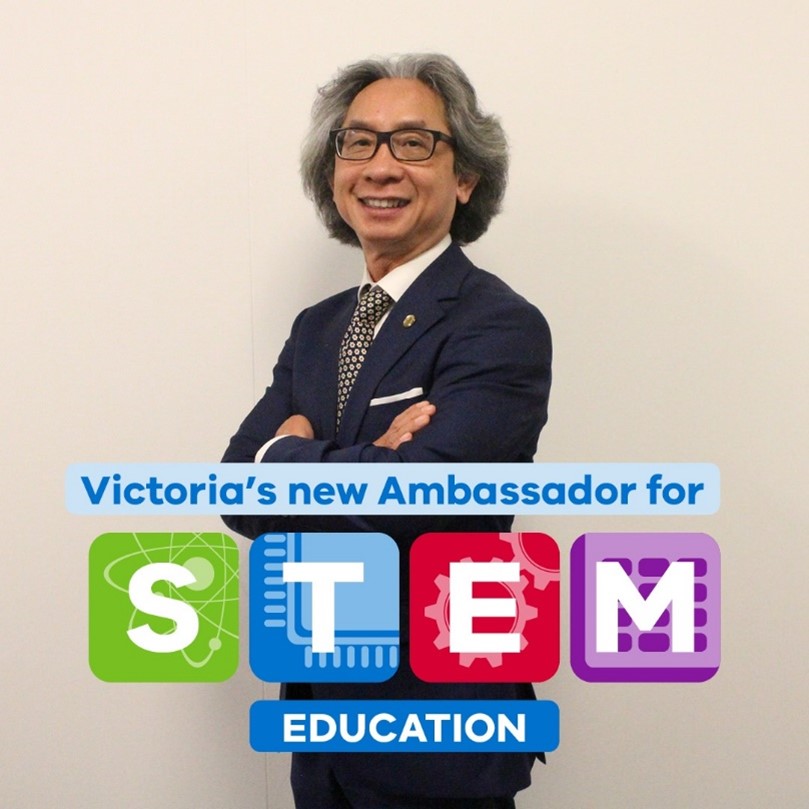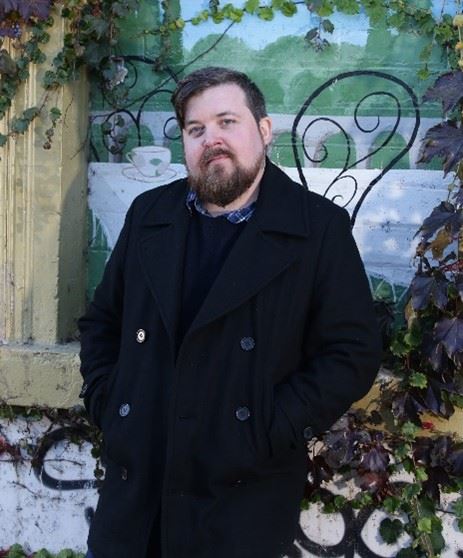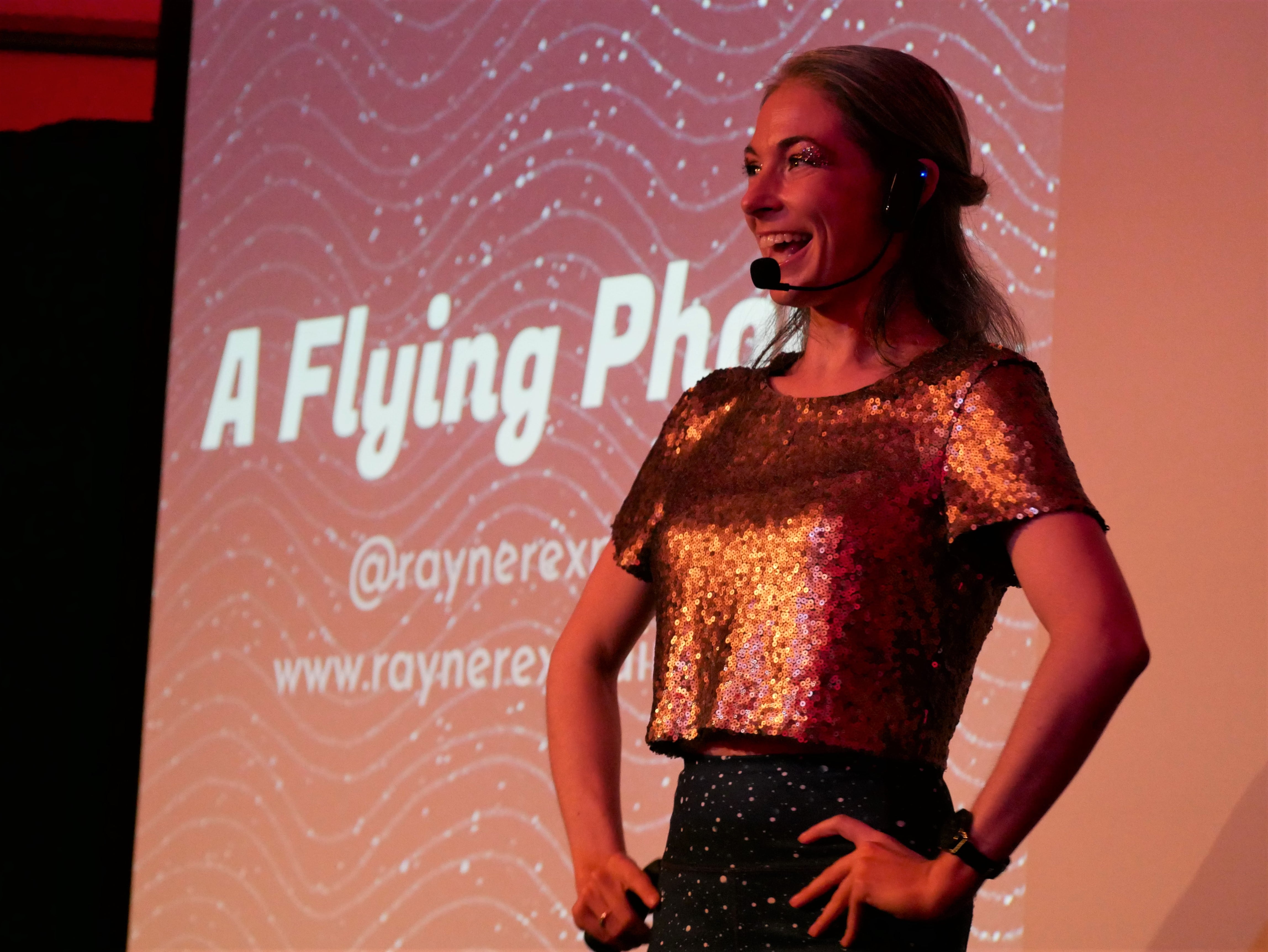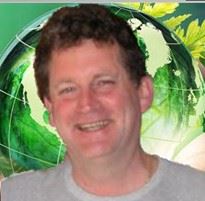From Computational Quantum Mechanics to Financial Modelling: Dr Alex Bray
“Through physics I learned to solve real world problems with maths and programming. The same can be said of my day job!”

Alex Bray, winner of 2020 AIP Bragg Gold Medal
Where I work: Macquarie Group
What I do: Senior quantitative analyst
I help to develop, derive, and maintain the models used by the organisation. This involves applying maths and programming to solve financial problems, along with interpersonal skills and technical writing.
Typical problems involve valuation of deals, capital and margin calculations, automated trading, or extracting information from observed market prices.
My physics background
I researched computational quantum mechanics applied to problems involving atoms and short laser pulses.
I studied physics, maths, and computer science at Curtin University for a BSc, and then Honours and a PhD at the ANU. During my studies, I was fortunate to undertake an internship with the Pawsey Supercomputing Centre and shadow a senior tech leader at Westpac by applying to their STEM PhD program.
During my PhD I spent two months at the Max Born Institute in Berlin and was later offered a Humboldt Postdoctoral Fellowship to continue work at this institution. I was able to present my work across Australia, China, Germany, France, the US, and the UK.
After submitting my thesis, I spent a further four months on completing a paper on a problem of relevance to nuclear structure before being accepted into my current role. For this thesis I was awarded the AIP Bragg Medal.
How physics has helped me get to where I am
My current role was advertised as seeking recent PhD graduates in quantitative disciplines. From Day 1, the technical and mathematical skills I had developed set me off to a flying start.
If understanding the world through maths is interesting to you, I highly recommend studying physics. You will develop the skills to tackle some of the world’s most complex problems and the confidence to take them on. Any quality employer, academic or otherwise, should recognise these abilities - along with being equally suitable for entrepreneurship.
The world needs more physicists!
Find me on LinkedIn.
From refugee to theoretical physicist to STEM ambassador: Prof Tien Kieu
“One can take a person out of physics, but deep down one cannot take the physics out of the person, so goes some saying.”

Professor Tien Kieu, FAIP
Where I work: Victorian Parliament
What I do: Ambassador for STEM Education and Member of the Legislative Council (South-Eastern Metropolitan Region)
In 2018, after a long career in academia and research, I took up an opportunity to run for the Victorian Parliament and was successfully elected to the Legislative Council.
At this stage of my life, I believed that I could contribute to the community at large on a different platform. Even though politics had not featured prominently in my life, having undergone the experience of growing up in a war-torn country, I was able to witness firsthand how important politics was, and how it could influence and determine the population’s standard of life, and even death.
For this reason, I have been heavily involved in many human rights causes, volunteering and community activities throughout my life - from my academia days until now.
Since entering Parliament, I have focused on multiculturalism, STEM and STEM education among other priorities. I formed Parliamentarians for STEM and was also appointed as the inaugural Victorian Government Ambassador for STEM Education.
Beyond these roles, I also serve as the Deputy Chair of the Legal and Social Issues Committee for the Legislative Council.
My physics background
In 1980, following the Vietnam War, I arrived in Australia on a humanitarian visa as a refugee after a perilous journey on sea and a restless stay in a refugee camp in Malaysia.
Upon settlement, I worked as a factory labourer before enrolling at the University of Queensland, where I commenced my academic career in theoretical physics.
My academic journey took me to the University of Edinburgh, Oxford University, the University of Melbourne, and Swinburne University; and my research in theoretical and computational physics extended to the fields of Lattice Gauge Theory, Quantum Field Theory, Fundamental Quantum Physics, Quantum Computation, and Econophysics.
I have also held visiting positions at MIT, the Princeton Institute for Advanced Study, and a Fulbright Fellowship at Columbia University.
My additional interest in machine learning and artificial intelligence also led to my engagement in consulting work for McKinsey & Co, and in quantitative and algorithmic financial trading for some private hedge funds.
In 2020, despite my demanding parliamentary duties, I managed to publish four papers in international journals on topics of fundamental quantum physics and adiabatic quantum algorithms.
This year, I submitted a paper on a quantum version of the central limit theorem, and its implications on time-dependent macroscopic entropies and on an emergence pathway for classicality from quantum mechanics.How physics has helped me get to where I am
In addition to my life experience, I have found that my training in science, particularly in the area of problem solving, analytical thinking, collaboration and communication has assisted me greatly in performing my parliamentary duties to the best extent that I can.
Maintaining some level of interest in physics in my parliamentary role is undoubtedly challenging; however, to engage in both sides simultaneously is extremely rewarding.
Find me on LinkedIn and on Facebook.
A conduit between academics & the general public: Ben Keirnan
“Research isn’t truly complete until you’ve told people about it, so I encourage you to reach out to the communication team in your organisation and tell them about your research, because people want to hear about it, including me!”

Ben Keirnan, former coordinator of the AIP newsletter bulletin and social media manager
Where I work: Faculty of Veterinary and Agricultural Sciences at the University of Melbourne
What I do: Communications Advisor
I support the Communications Lead to deliver communications, advice, and support to the Faculty on how best to engage with their stakeholders (staff/academics/public/business/government).
I plan, develop, coordinate, and deliver a broad range of communications to enhance and protect the University’s profile across internal and external channels, including news outlets, events, social media, and other digital platforms.
My physics background
My university life started with a Bachelor of Interactive Entertainment, majoring in Animation from QANTM College, followed by a Bachelor of Science from the Queensland University of Technology, majoring in Physics and Science Communication. I completed Honours in Physics at QUT and then a Masters in Science Communication from the Australian National University.
I have worked also as a freelance Graphic Artist, Marketing Advisor, and Podcast Producer.
How physics has helped me get to where I am
My academic background in both science and communication enabled me to understand and translate complicated scientific topics to be more easily understood by a wider audience.
My first major role was as a Science Communicator for Science in Public. As part of this role, I wrote the monthly newsletter and managed the social media accounts for the Australian Institute of Physics. I learned to write short, lively, and accurate copy for social media, newsletters, and media releases.
My current role allows me to further develop the ability to communicate with academics and bridge the gap between academic and non-academic ways of communicating.
I have frequently found myself facing datasets that need analysis and I feel my physics training has enabled me to tackle these challenges without concern or hesitation. Recently I also found myself explaining the basics of quantum computing to a colleague, so it seems a solid grasp of physics has value in many unexpected places.
Research isn’t truly complete until you’ve told people about it, so I encourage you to reach out to the communication team in your organisation and tell them about your research, because people want to hear about it, including me!
I also produce an academia meets fantasy podcast with three other science communicators. Dungeons & Doctorates is a Dungeons and Dragons podcast following the adventures of three postgraduates in a fantasy university dealing with supervisors, monsters, and peer-reviewers. Physicists may be interested with one of the main characters, whose thesis is looking at the mystery of “wandering stars”, as he pushes against thousands of years of belief and superstition to spread the truth about planets.
Find me on LinkedIn and Twitter.
Comms support and physics stand-up comedy: Rachel Rayner
“As physicists, we can see this extra layer of existence that others don’t: photons interacting with electrons, cosmic rays travelling through the air, atoms being mostly empty space… Other people might be curious about this quantum world too, which is why I put together a comedy show.”

Rachel Rayner
Where I work: I work for myself and at CSIRO
What I do: Science Communicator
At CSIRO I am the Communications Advisor for the ASKAP radio telescope. I support and create opportunities for the researchers to share their work around the world through news articles and interviews, while also producing informative content on the ASKAP radio telescope and radio astronomy.
Outside of that, I am a performer, working under the title “Rachel Rayner Science Explainer”; it’s a mouthful, but it rhymes!
I currently have a one-woman comedy show called A Flying Photon, which will be the first of three shows that explore our Universe on the very small scale (photons, protons and electrons). I wrote and produced the show. It has sold out at various venues, so I’m looking forward to taking it on the road more regularly.
My physics background
I have an undergraduate degree in Liberal Studies, which required studying a science major and an arts major. So, I studied Physics and Art History & Theory. In the course, we didn’t specialise too deeply in any particular type of physics, but I did lean into quantum mechanics and high energy particle physics much, much more than fluid dynamics or solid-state matter.
How physics has helped me get to where I am
One of the most useful things in the work I do is being able to understand scientific papers and know what questions to ask the researchers.
Many of us here may take for granted the ability to sift through a scientific paper to understand the concepts, relevance, and research process. However, this is something that not a lot of people can do! I can quickly get to the heart of a story because my background knowledge in the science is already there.
Physics covers a lot of everyday experiences. When I was working in science centres, most of the exhibits we built, and most of the shows we wrote, were to do with physics concepts. I’ve always found it useful. Without my understanding of physics, I would never have been able to write my show!
I realised that, as physicists, we can see this extra layer of existence that others cannot: photons interacting with electrons, cosmic rays travelling through the air, atoms being mostly empty space. I love being able to ‘see’ this, and know what is happening around us on a subatomic level.
Then I realised that other people outside of physics might be curious about this quantum world too, which is why I put together the comedy show.
My idea seemed justified when one reviewer said, “The next day I found myself remembering what she talked about and looking at the world differently. Could the show really be more successful in its goal than that? I think not.”
Lab instrument development & entrepreneurship: Prof Daniel Shaddock
“Physics research throws a lot of really hard problems at us. Knowing that we have solved some of these gives me great confidence that we can do anything.”

Professor Daniel Shaddock
Where I work: Liquid Instruments (LI)
What I do: CEO and co-founder of LI
My physics background
My background is in laser metrology for gravitational wave detection. I started off trying to design the 5 degree-of-freedom control system for the advanced Laser Interferometer Gravitational-wave Observation (LIGO) project before moving to NASA’s Jet Propulsion Laboratory (JPL). At NASA-JPL I worked on the planned space-based gravitational wave detector, Laser Interferometer Space Antenna (LISA).
While I was a Professor in Physics at the Australian National University (ANU), my team and I developed a lot of techniques and know-how to make precision measurements, mostly using quantum/laser sensors with fancy signal processing. After our technology was launched into orbit on the Gravity Recovery and Climate Experiment (GRACE) Follow-on mission, we decided to start Liquid Instruments to share our measurement technology with others.
How physics has helped me get to where I am
Physics gives you a great basis to analyse problems from first principles. A career in physics set me up to be able to break down complex problems and solve them piece by piece. If you do this a lot, you get a pretty good intuition about which bits are going to be hard and which bits are probably easy. This lets you know in advance where you need to push, where you can phone it in, and even when you should run away.
I was really surprised that being a CEO of a start-up company required a lot of the skills that I had built up over the years as a researcher and Professor in Physics. You have to be able to come up with ideas, get funding, build (and keep) a team, and then execute on your plans to make something work.
Physics research throws a lot of really hard problems at us. Knowing that we have solved some of these gives me great confidence that we can do anything. “Hey, if we detected gravitational waves, surely we can figure out how to pass CE (European Conformity) certification, understand GST and maybe even navigate the R&D tax incentive application form?”
Technical writer for data analysis software: Dr Vasaant Krishnan
“As a radio astronomer, I learned to be a team member in the scientific environment of today—one that is contingent on individuals with diverse abilities and experiences.”

Dr Vasaant Krishnan
Where I work: Echoview Software
What I do: Technical writer
Echoview Software specialises in developing software for hydroacoustic data analysis. The software is used globally by governments, scientists, commercial fisheries, and NGOs to support the understanding and sustainable use of aquatic resources.
As the Technical Writer, I create documentation for users of our software and for our staff.
My physics background
After completing my undergraduate degree in physics at the University of Tasmania, I commenced my PhD there and trained as a radio astronomer.
As a radio astronomer, I acquired a mix of practical skills in using computer software and digital signal processing. I also learned to be a team member in the scientific environment of today—one that is contingent on individuals with diverse abilities and experiences.How physics has helped me get to where I am
My background in physics is invaluable for grasping technical matters from a fundamental standpoint.
On one occasion, I was collaborating with a software developer to model the slew of the MeerKAT interferometer. We succeeded by combining her programming talents with my understanding of the underlying principles in mechanics.
In my current role, I provide support for scientists who utilise our software. To do this, it is imperative for me to understand the physical phenomena in question, the mathematical tools we are using to model them, and the programming techniques employed to implement the algorithms.
It may be a cliché to express that my training in physics has endowed me with analytical and problem-solving acuity. However, this aptitude for troubleshooting is what I rely on regularly.
Data scientist optimising energy supply chains: Dr Qi Chu
“Physics is an infinite maze. Once you fall into it, it’s hard to get out . I am always awed by its beauty and difficulty.”

Dr Qi Chu
Where I work: Woodside Energy
What I do: Data Scientist
Woodside Energy is a global energy company with headquarters in Perth.
My job entails modelling, analysis, and optimisation of supply chains and energy efficiencies.
My physics background
During my high school years in China, I used to be very bad in physics such that my physics exam scores were usually 40 out of 100. I ended up in a Bachelor of Engineering degree studying telecommunication and electrical engineering, and then a Master of Science degree studying computer science. I did these degrees in China.
Physics was not my thing until a PhD opportunity popped up to study gravitational waves at the University of Western Australia (UWA). I joined and had the privilege to work with the best scientists globally from the Laser Interferometer Gravitational-Wave Observatory (LIGO) collaboration, and later became a research fellow at UWA branch of the ARC Centre of Excellence for Gravitational Wave Discovery (OzGrav). I participated in the very first breakthrough discovery and developed a real-time gravitational wave detection pipeline with collaborators, which has been sending detection alerts to the world during LIGO observation runs.
Physics is an infinite maze. Once you fall into it, it’s hard to get out. I am always awed by its beauty and difficulty.
How physics has helped me get to where I am
I was very lucky that I met a person from Woodside. They were looking for people with a physics background to help the data science team interpret results and improve analysis. I was quite happy to accept a job in which I could use my physics training.
The problems I now face every day at work are essentially physics-related problems. They are related to how much energy has been used or emitted, and how much is left to be shipped to the user markets. I apply research skills to model energy supply chains and find solutions. My physics training helps me understand the fundamentals about the energy transitions in the supply chain.
One example is that I have been working with engineers on modelling a fluid propagation problem. My physics background helps me understand the problem quickly from a holistic view. The maths skills I gained while studying general relativity helps simplify the modelling.
From modelling physical systems to a thriving business: Dr Peter Seebacher
“A constant challenge in life is to create order and clarity where there is chaos and disorder. Physics training lets you do this. Physics is both a science and a way of life.”

Dr Peter Seebacher
Where I work: AusEng Pty Ltd
What I do: Business owner
Woodside Energy is a global energy company with headquarters in Perth.
My job entails modelling, analysis, and optimisation of supply chains and energy efficiencies.
My physics background
I run my own business that operates in two domains: business, financial and economic services; and engineering and scientific services.
Both these activities are largely used to advance our interests in innovative technology, particularly distributed temperature optical fibre sensors. This technology is researched, developed, and made here in Australia.
Our activities are an eclectic mix of maths, physics and engineering, business decisions, economics, and regulation. Interestingly, much of our financial and economic work requires the modelling of physical systems and putting an economic overlay to inform things like net benefit cases that are used for industry decisions and government regulations.
How physics has helped me get to where I am
I taught and did research at USyd for several decades, mostly in the field of energy conversion. I became involved in the development of optical fibre sensors for an industry consortium and then joined a private company to commercialise the technology.
A few years later the opportunity presented itself to develop my own business to provide a platform for Australian-developed advanced technology. Our solutions are underpinned by a fundamental understanding of the underlying physical processes. Our journey through universities and CRCs and the interactions with many leading engineers and physicists has emphasised the importance of this. The tediousness of our systematic and disciplined but lengthy approach is completely lost the moment something new is revealed or your predictions are confirmed.
I don’t think there is a workday when I don’t use my physics training. How does it underpin business activates you might ask? Some people guess, some aggregate or conflate, many follow memes but we prefer to understand.
A constant challenge in life is to create order and clarity where there is chaos and disorder. Physics training lets you do this. So, to me, physics is both a science and a way of life. It has propelled me towards great places.
Did I tell you about the travel? I spend up to two months a year overseas networking, deploying technology, and visiting labs: in essence having fun. I’ve met wonderful people, climbed Mount Fuji, rode a balloon and a dune buggy in a desert, and enjoyed tagliatelle with white truffle and Nebbiolo wine in Northern Italy – what a wonderful world.

Mathematical modelling of financial markets: Dr Robert Hannah
“Physics is very multidisciplinary: a powerful combination involving coding, statistics, modelling, math, and theoretical understanding. Your skills will always be in high demand.”

Dr Robert Hannah
Where I work: Citadel Securities, Miami
What I do: Financial modelling of markets
We handle roughly 40% of all stock trades in the USA. We hire mostly people with STEM degrees: physics, maths, statistics, computer science, etc. My team all have PhDs in various fields.
I do "quantitative research". This is a multidisciplinary field that is a combination of statistics, machine learning, algorithms, programming, optimization, and more. We try to model and predict financial markets to reduce risk and make them more efficient.
Financial markets benefit society when prices reflect the true value and risk of various investments. Say that you have a car that you need to sell quickly to pay for an unexpected expense; you may have trouble finding someone in a short time that wants the exact kind of car that you have, and you may not get a fair price, therefore losing money. When financial markets are efficient, you can always buy or sell assets for a fair price when you need to. Quantitative research is a fierce and never-ending competition to find the true price of assets.
My physics background
In my undergraduate degree, I did a lot of theoretical physics related to electromagnetism, plasma, and astrophysics. I was too clumsy for experimental fields! For years I loved thinking about all kinds of systems in nature and trying to figure out how they worked. I wanted to see if I could figure out the physics and mathematics behind these systems without going and reading about them first in a the Feyman Lectures. I knew that one day I would reach the frontier of knowledge, and I would have no books to rely on any longer. So, this was the only opportunity to practice.
Years later as a quantitative researcher, this experience of thinking about modelling the natural world with physics has become invaluable in allowing me to think of creative solutions to the hard problems we face on the frontier of financial markets.
How physics has helped me get to where I am
There are several related reasons why physics is an excellent degree for the 21st century.
Firstly, physics is very multidisciplinary: a powerful combination involving coding, statistics, modelling, mathematics, and theoretical understanding – the exact set of buzzwords that recruiters search for on LinkedIn. Your skills will always be in high demand.
Secondly, physics and similar subjects give what I like to call "generalized quantitative experience". Studying one quantitative area helps you learn any other one. This will give you a wide variety of choices. You can transition into almost anything technical or quantitative. If you decided to be a data scientist later, then you would already have a reasonably solid background in statistics you could build upon. If you wanted to be a software developer, well you probably have done a decent amount of coding as well.
We just hired someone who did a PhD in theoretical physics (string theory) to do alpha research (using modelling and statistics to predict the market). Because of his physics background, he barely needed any training before he started producing results. Having both generalisable and sought-after skills will give you tremendous personal, intellectual, and financial freedom that you will reap the benefits from for the rest of your life.
Cleaning contaminated soils: Dr Sean Manning
“The tricks a physics education teaches you about approaching problems, identifying the critical features, and breaking them down into useful units, are all universally useful.”

Dr Sean Manning
Where I work: I work at Ziltek. Our flagship product is RemScan, a mid-infrared spectrometer that provides rapid, in-field measurement of oil contaminated soils to guide soil remediation.
We are also developing RemScan for measuring agricultural soil parameters for precision agriculture and carbon farming.
What I do: I am the CEO. I oversee the operations of the company, manage staff, develop new markets and guide the technical development of the products.
My physics background
I studied a Bachelor of Science with a major in physics at Flinders University of South Australia. I then moved to The University of Adelaide to undertake an Honours degree in experimental optical physics. Following Honours, I completed a PhD in the areas of optical materials science and non-liner optical phenomena.
How physics has helped me get to where I am
I was initially hired by Ziltek as their Chief Scientific Officer based on my experience with optical measurements, spectral analysis and machine learning. My role was to develop and refine the core RemScan technology and our internal production processes and procedures. After a couple of years in this role a vacancy opened up in the CEO position and I was promoted into it. I have been in that role since January 2022.
In my role, I use my physics training in a number of direct and indirect ways. Our company’s product is very technical and I like to maintain a deep understanding of it so that I can steer the company in sensible directions. This requires a deep fundamental understanding of the physics underlying our technology. Indirectly, I find that the tricks a physics education teaches you about approaching problems, identifying the critical features, and breaking them down into useful units, are all universally useful. So, I lean on these skills to help me solve problems generally.
I have never once regretted studying physics. I am grateful for the outlook it has given me on the world, and I regularly use the problem-solving skills it has given me.

